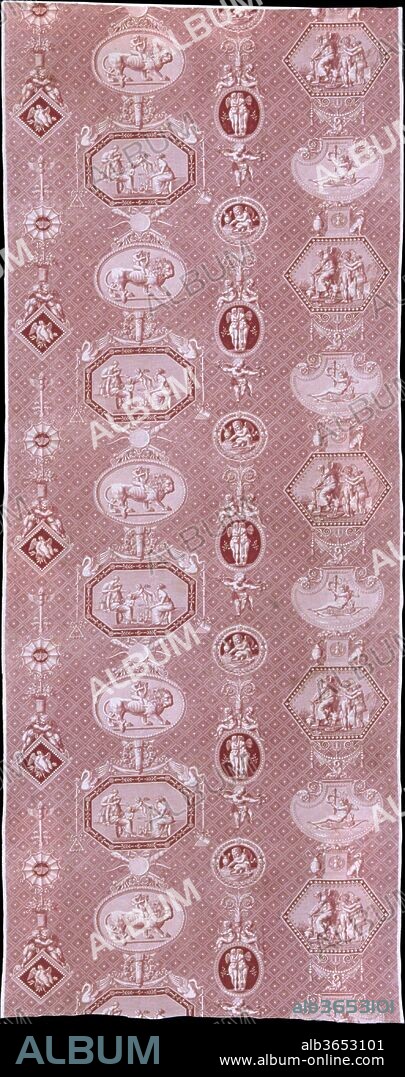alb3653101
La marchande d'amours

|
Ajouter à une autre Lightbox |
|
Ajouter à une autre Lightbox |



Avez-vous déjà un compte? S'identifier
Vous n'avez pas de compte ? S'inscrire
Acheter cette image.
Sélectionnez l'usage:

Titre:
La marchande d'amours
Légende:
Voir la traduction automatique
La marchande d'amours. Culture: French, Jouy-en-Josas. Designer: Louis Hippolyte Lebas (French, 1782-1867). Dimensions: L. 90 x W. 99 inches (as one piece)
228.6 x 251.5 cm. Manufactory: Oberkampf Manufactory (French, active 1760-1843). Date: ca. 1816.
The title of this piece, which translates as "The Merchant of Love" or "The Cupid Seller," is based on the scene in one of the octagonal cartouches showing a woman selling winged cupids from a cage. In 1816, Lebas was asked by Émile Oberkampf, son of the factory founder Christophe-Philippe Oberkampf, to produce several patterns for the firm. The Museum has two pieces resulting from that commission: "La Marchande d'Amours" and a pattern showing various historic sites in Paris. This exemplified a type of Neoclassical scenic textile popular during the first two decades of the nineteenth century in which a variety of motifs following a theme were isolated in decorative frames against a geometric patterned background. In contrast to eighteenth-century narrative designs, in which motifs float like islands on a white ground, these early nineteenth-century cottons form an overall decorative pattern unified by the geometric background.
Technique/matériel:
Cotton
Musée:
Metropolitan Museum of Art, New York, USA
Crédit:
Album / Metropolitan Museum of Art, NY
Autorisations:
Modèle: Non - Propriété: Non
Questions sur les droits?
Questions sur les droits?
Taille de l'image:
1768 x 4466 px | 22.6 MB
Taille d'impression:
15.0 x 37.8 cm | 5.9 x 14.9 in (300 dpi)
Mots clés:
 Pinterest
Pinterest Twitter
Twitter Facebook
Facebook Copier le lien
Copier le lien Email
Email
